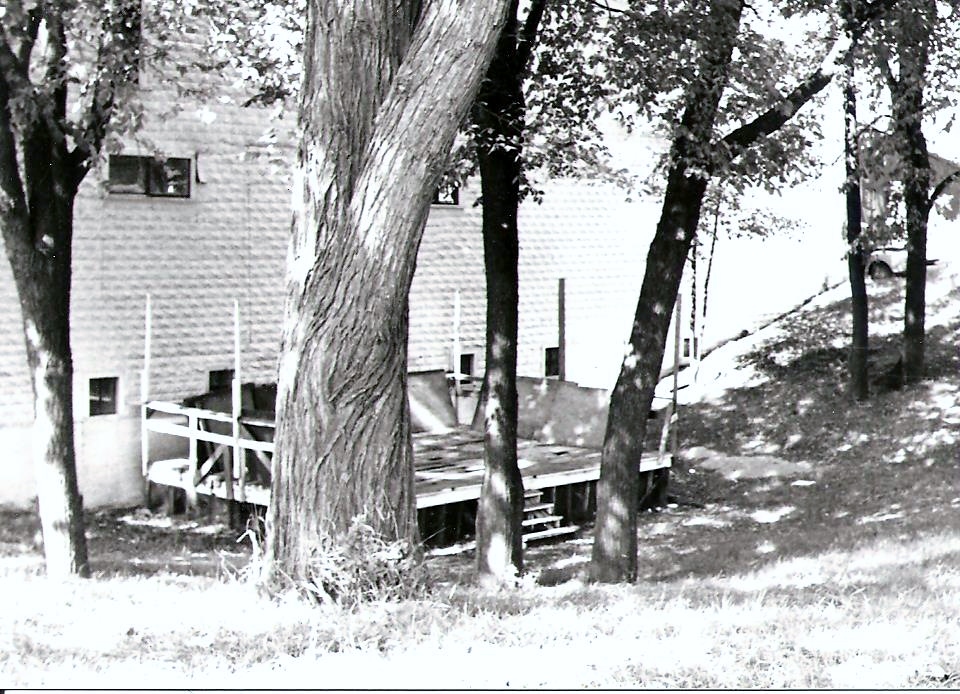
Perhaps if Christopher Clark had given any serious thought to the town which would inevitably grow up around his mill site, Marion might be in a slightly different location. Since the early lumbering days and the arrival of Mr. Clark, dealing with the river in this low valley of the Middle Branch has not been the easiest task. This may have been the best location for damming the river, but not necessarily the best for founding a village.
The Middle Branch River wends its way through and around Marion, almost encircling the downtown district. Our little river valley gave Marion a bit of almost every kind of river associated topography, from a vast, low swampy region to the southeast and more swampy land to the west, to deep gullies and ravines carved by small creeks draining higher ground from the north and east.
There were two deeply cut ravines or gullies slicing through the northeast portion of Marion’s largest residential area. They ran from east of Broadway, between Main and Third and between Fifth and Sixth Streets, to the river. There was always at least a trickle of water at the bottom of each. It took many years and more yards of soil and fill materials than anyone has kept track of to fill them. They seemed to have an appetite for entire trees, countless loads of large rocks and even the remnants of buildings. If you know where to look today, traces of them are found within the Village.
The solution to utilizing the lots along east Main Street was simple; buildings were simply built from the gully up at the rear. The double, two-story building of the Orr & Dunham Hardware on the east, and the Marion Twp. Hall on the west, was impressive and the largest such building in town at that time. When viewed from Pickard, the massive structure stood three tin-clad stories tall, cellar to roof. Between the hardware and the Main and Pickard corner, what was left of the gully formed a bowl more than a story deep. Unfortunately, in Marion’s earliest days, folks tossed trash in the hole. Trees and brush grew wildly and it became quite an eyesore.
Dr. Joseph F. Carrow M.D. (1874-1955) was an early resident arriving in 1898. It did not take him long to become one of Marion’s staunchest supporters. He was responsible for organizing the Chamber of Commerce, Businessmen’s Baseball, starting the August 7 Homecoming, which we call Old Fashioned Days today, and the Marion Stock Exhibit, among other civic works. During his tenure as Village president, three miles of sidewalks were installed in town. Sadly, much of the residential sidewalk system has been removed when sewers went in.
It was Dr. Carrow who recognized the gully ‘eyesore’ for the asset that it could be. The good doctor and the Chamber of Commerce persuaded the village to purchase the eyesore lot on the corner in 1934. The cost to the Village was $75. Carrow, with the help of the Depression era WPA, oversaw the work and on November 23, 1936 the former dumping ground, turned shady amphitheater, was completed.
With the Marion Municipal Musical Bowl ready for use, spring time saw area residents enjoying weekly band concerts and eventually free movies. The August 7, 1937 Homecoming celebration saw hundreds of folks sitting on the grassy slopes, enjoying the High School Band, a talent contest, and vaudeville show. By all accounts, was the hit of the Homecoming.
The Bowl saw considerable use during election years. Visiting politicians found it an easy place to speak to large crowds. In 1940 the then Michigan State Highway Commissioner, Murray VanWagoner, spoke to a huge crowd, numbering several thousand, from the bowl platform. VanWagoner later became governor of Michigan.
In 1950 the Marion’s Bowl got an upgrade. The Village removed the well worn wooden band platform and installed a concrete one, complete with improved steps, railings, lighting and sound. Marionites filled the newly refurbished bowl for a second dedication and a summer band concert. They also heard a few words from Dr. Carrow and from Fern Berry (1898-1968) who was Carrow’s assistant during both eras of Bowl work. She spoke praising Dr. Carrow and reminding all that the Bowl was but a small indication of the great civic spirit to be found in Marion. She ended by saying that what it represented made “us all proud to be residents”.
For another twenty years the Bowl was used for entertainment and public speakers. Each Halloween the Chamber of Commerce sponsored a costume contest and party at the Sun Theater for all area children. The stage at the Bowl was used weather permitting, for costume judging.
By the late 1960’s disease had taken its toll on the large American elm trees that gave a leafy roof to the Bowl and they were removed. A large colony of honey bees found opportunity and a home under the tin siding of the Morton Hardware building and posed somewhat of a formidable threat to those who ventured too close. Trash began to accumulate and the Bowl fell into disuse. It was filled in the 1970’s.
Within a few short years fire claimed the massive old hardware structure which housed the Gambles Store. And it passed into fond memory and local lore along with the Bowl, the elm trees, and summer band concerts.
The site of the Marion Municipal Music Bowl is now the LayLine Building parking lot.
